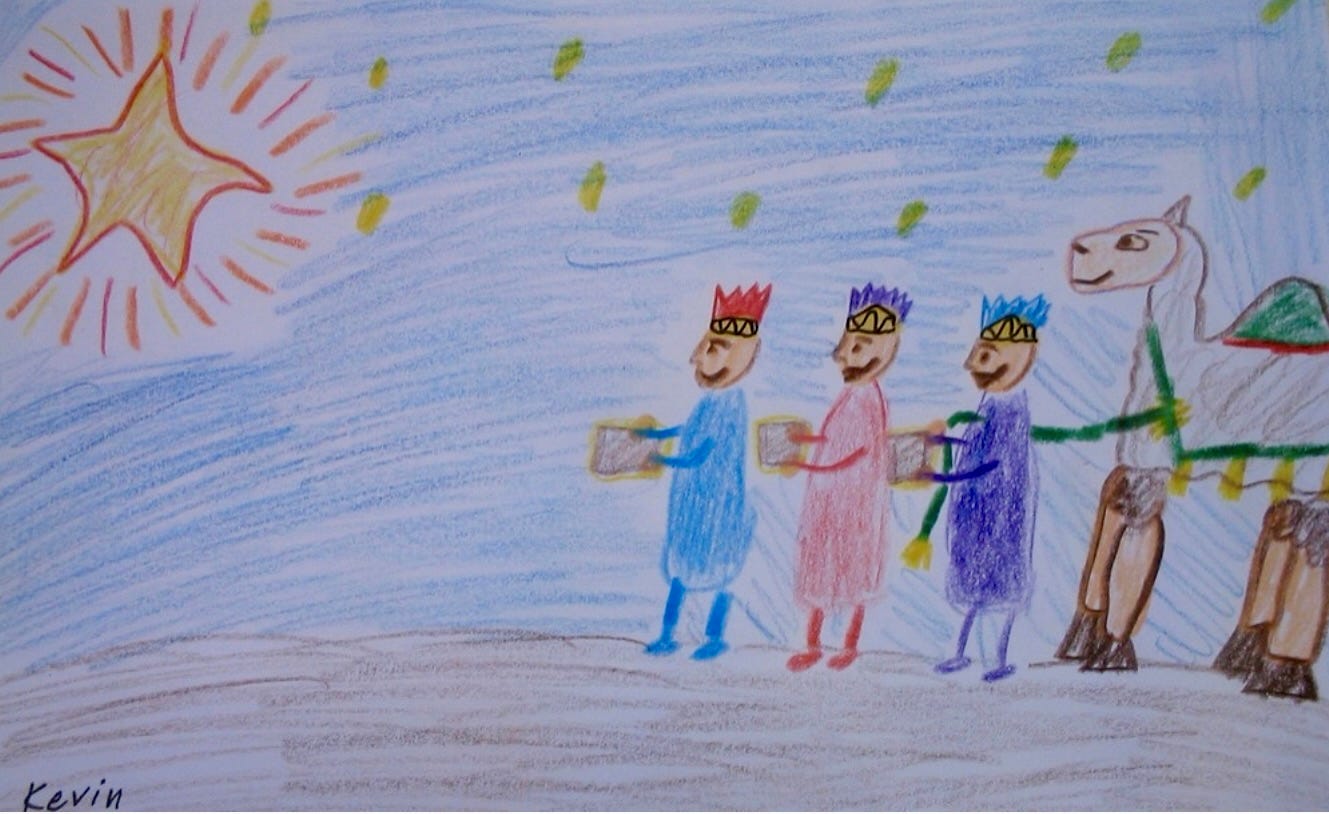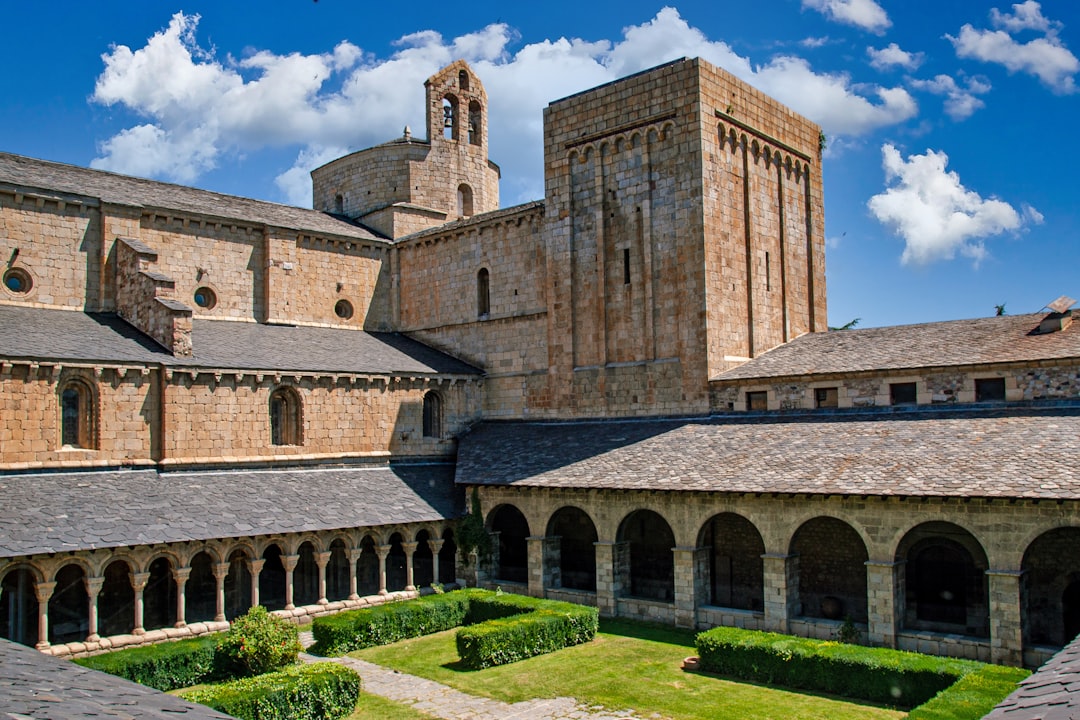Cultivating a Sacramental Vision
Smells and bells and feasts and fasts for ever and for everyone amen
A few weeks ago, we talked here on the blog about the ways that family prayer can sometimes feel performative, and the lovely
left such a thoughtful comment in response. Here’s an excerpt:I was raised Catholic and love the tradition, the sacraments, the liturgy. And I also see how I had tried to follow a sort of “checklist” religiously with my children in an attempt to feel that I was “covering” everything. It was not until I became a trained catechist in Level One of Catechesis of the Good Shepherd (a Catholic Montessori-based religious formation for children 3 to 6 years old) that I realized that checklists don’t really work for our souls or for children… It’s beautiful to light a candle and maybe let one of the children snuff it out at the end of your prayer time with a beautiful candle snuffer—with guidance at first.
I loved all of what Ann had to say, so I reached out to her to see if she’d be willing to offer some further reflections on cultivating a sacramental vision. I’m thrilled to share her thoughts with you below! I will be thinking and praying with Ann’s words for a long time.

Ann, thank you so much for joining us today! Before we get started, would you tell me (and our readers) a little more about yourself and your background?
Thank you for inviting me, Sara.
Hello everyone! I was raised in a Catholic family in a tiny Illinois town surrounded by a sea of cornfields. I became an ICU Nurse, married my childhood sweetheart, and took a 20-year hiatus from bedside nursing to raise and homeschool our kids. Today, we live in North Carolina, where I’m a nurse working in the field of Dentistry. I find it to be a fascinating combination of art and science. My patients are some of the kindest people; they’re truly a joy to serve! My husband, Kevin, and I have celebrated 36 years of marriage now. We have two adult children and a teenage rat terrier named Killian.
So, we're talking today about the so-called "Sacramental Principle". If the definition of a sacrament is, as St. Augustine said, an “outward and visible [sign] of inward and spiritual graces,” then the Sacramental Principle would be, more or less, using outward, tangible realities to direct our hearts toward inward, spiritual ones.
In your experience, what is the benefit of approaching the faith with this lens?
Back when our first child was born, I honestly felt ill-prepared spiritually. I wanted to strengthen my own faith in the hope that I might raise my child from a more rooted place of peace. So, at my parish, I enrolled in a program to become a trained catechist in the biblically-based Montessori-style program called Catechesis of the Good Shepherd. The program was founded in Italy in 1954 by a Catholic biblical scholar named Sophia Cavalletti. Today, it exists, mainly in Catholic and Episcopal parishes, all over the world.
When I began the training, I had no idea how deeply formative this method, designed for young children, could be for an adult like me. In a way, it felt like I was re-discovering something I had known all my life, but had sort of glossed-over and taken for granted.
The sacraments give us a hands-on, tangible way to ponder the profound mysteries of faith. It’s humbling to help a child contemplate the mystery of Jesus’s Presence in the bread and wine of the Eucharist. I had to slow down and learn to ask more beautiful questions. I learned to wonder and to let a question hang in the air to grow in a child’s heart (and in my own heart) instead of limiting her spiritual imagination by giving a quick rote answer.
I learned to look with new eyes at something as small and tangible as a cup of wine or piece of bread—something that fits in the palm of my hand—and realize that it also contains the vast, ancient, endless love of God. For me. For you. For all of us. The contemplative way of looking at the sacraments changed my life. Children are very good at seeing through things that are too fluffy. Yet sometimes, well-meaning adults feel like we have to entertain children to hold their attention. Religious education can feel like a silly birthday party with a Jesus theme. This is often what causes children to miss the real messages of our faith.
The simplicity and beauty of each lesson is what resonates with a child.
Teaching young children in a quiet, respectful, hands-on way, helped me to develop a fresh contemplative outlook in my own philosophies of prayer, and mothering, and life. I’m grateful to share something of it with you and your readers, Sara.
Here’s a sample lesson from Level I of Catechesis. See what you think. I find it meaningful for adults, as well as children:
Preparation of the Chalice
Materials:
One large, clear glass goblet
Two small cruets: one contains about 3 ounces of water, the other holds 3 ounces of dark red wine
(Note: I never had a child try to drink it. But do supervise closely and clarify that this wine is just for pouring—not for drinking. Or you can use grape juice, but it won’t smell like real wine and I think this is important.)
For clarity’s sake, we try not to move and speak at the same time. Go slowly. Speak and move with naturalness and quiet joy—with reverence and loving attention to detail. It helps the children to focus.
Show the cruets. Say:
Let’s learn together how the priest pours wine and water for communion. Communion is also called the Eucharist. It is a special time for us to come together at the altar table at church. This cup is called a Chalice. At church, this cup is beautifully made of shining silver. Ours is glass today so you can see what’s happening inside the cup. These are called Cruets. The cruets hold the water and the wine.
Watch while I show you how the priest prepares the chalice.
This is the wine. The wine is Jesus. Pour all the wine into the goblet.
This is the water. The water represents us. Pour just a drop of water into the same goblet.
Gently ask some wondering questions and let the children answer as they look at the goblet:
How much wine did I pour? All of it
How much water? Just a drop
Can we still see the water? No
Where is the water now? It’s in the wine
Can we take the water back out of the wine? No
If the wine is Jesus and the water is us, I wonder why there is so much wine and just a little water?
What do you think Jesus is showing us with the wine and the water?
Children will often have the most beautiful responses like: “Jesus is so Big, he is so Much.” “We are all together with Jesus.” And, as one little boy excitedly announced: “We are lost in Jesus!!!”
Ask the child:
At Communion, when the people drink the wine, where is Jesus then? In the people
When we leave the church, does Jesus come with us?” YES!
As you look at the chalice, you might want to light a candle and sing a favorite hymn together. You can pray, thanking God for the gift of the Eucharist, the gifts of water and wine—the great Love of Jesus who lives in us all!
Reverently empty the cup, wipe it clean, and fold the cloth (or paper towel) neatly.
If the children are still interested, refill the cruets by using a little funnel and let them try to repeat the lesson, teaching it to you by pouring the wine and water themselves, if they are able to pour.
The pouring and the wondering are “the work” of the child—it’s their meditation on this sacrament. Try not to speak too much or to interrupt their work/prayer. They may want to repeat this work several times. That’s always fine. Next time you’re at church, see how closely they watch what the priest is doing!1 They have now entered one of the great sacramental mysteries of our faith—they are learning to know Jesus, who gives all of himself, to all of us, in the Eucharist. Maybe you’re feeling your own faith growing each time you receive this sacrament, too.
When we're talking about a sacramental worldview, I think we often see it discussed as a catechetical tool geared toward children because children are very practical, very physical, very literal. I'd love to hear your thoughts on how we can use this principle to teach our children how to pray and how to relate to God, rather than relying only on formal, explicit teaching and recitation.
Well, we know above all that our children live in the Present Moment—in their five senses. They have a direct, intense, hands-on way of approaching all things. My little daughter used to look me straight in the eye and say: “Let. Me. DO. IT!!!” :) We’ve all had a conversation with a 2 or 3 year-old like this! They want to see and touch and do—to experience Life. They are smart and they can have a great deal of dignity and seriousness, too.
What I’ve learned about sacramental living with young children is that we can meet them exactly where they are. We can come to respect that the child is already in relationship with God. This is a beautiful mystery. And it’s our job as parents to gently foster this relationship, to help give it some shape, and essentially to help the child fall in love with Jesus, the Good Shepherd who already loves them and calls them by name. We must not come between the child and Jesus. We don’t always just tell them about Jesus; we let them come to know Jesus in tangible ways and real experiences as often as possible.
There are many sensory delights in the church that young children can learn about at home in a hands-on way—things like learning the liturgical colors, religious statuary and works of classic art, the rosary, holy water, incense, music, and the consecration bells. Seeing, hearing, and touching while learning about these things gives children a greater understanding and appreciation for what’s happening in the Mass.
Parents might want to trace the sign of the cross on the forehead of their child as they are tucking them into bed at night. Your child might trace it on your forehead, too. It is a small gesture to help us both recall our baptism when we were marked with holy chrism oil—a reminder that we are “sealed with the Holy Spirit and marked as Christ’s own forever.” We are always living into our baptismal covenant.
You can find so many good videos online now. The pandemic prompted many catechists to offer lessons this way for children who could not attend their usual Sunday class. This lesson on The Altar is especially good. You can search for many more lesson videos by looking for “Catechesis of the Good Shepherd Level 1 presentations” on YouTube.
And then, even for us as adults, there's so much to be learned when we look at the world through this sacramental lens. What do we stand to gain by highlighting the sacramental principle in our prayer time, and using this method to teach and model for our children?
I think the best thing parents can model is a deep enjoyment of their own prayer practice. It is contagious to children more than anything we could ever tell them with words. And it is a balm to us in the midst of the hard work of parenting.
Is your prayer time something you look forward to and approach as an ordinary joy throughout an ordinary day? Do you have a comfortable spot (right in the middle of the living room, in the midst of all the busy-ness of the day) with a small table to hold a Bible and any other spiritual reading you’re enjoying? You might want a candle, a place to put your tea mug, a special statue, your rosary beads. Do you pray silently sometimes—closing your eyes, resting in God, enjoying the peace of a few deep breaths throughout the day?
These behaviors speak volumes to children. They love to emulate us.
How does approaching the world with a sacramental lens help us to better "pray without ceasing" and find the presence and will of God in each present moment?
Oh, I think parenting is definitely a monastic vocation! It’s a 24-hour a day commitment. The family home is, in essence, a small monastery where we can grow and thrive together.2
Music and candles are underrated mothering tools. I used to play some Bach or other sacred music first thing in the morning to set a calm mood for the day as we ate breakfast.3 And I would always light a candle in the kitchen as I cooked or washed the dishes. This work is holy.4 My children used to love “candle bath” when we’d light a candle for a peaceful calming bath time. I’d silently thank God for them as I shampooed their little heads.
Jesus is praying in us, presenting us to God, all day, every day. We remember this—and we forget. That’s just our human nature. How are we supposed to remember that when our toddler is screaming in the grocery store? God always understands this and loves us. We get a thousand chances to come back to God, over and over again, on any ordinary day. We can pray with just one mindful breath using the name of “Jesus” or “Peace” or a word like “Maranatha” which means: “Come, Lord.” Breathe in the love of God; breathe out that love for your family. Pick up the little shoe that got kicked off in the grocery store parking lot. Repeat.
As we approach the beginning of Advent and the "liturgical new year"—how would you suggest an individual or a family start out if they're looking to incorporate more of this sacramental principle into their personal or family prayer life?
I’d recommend having an unbreakable Nativity scene that your children are welcome to play with. Set it up on an accessible table or shelf that they can reach. Teach them to put it back when they’re finished working with it. You can use the figures to tell the stories of the Infancy Narratives. You can talk about some of the names that this holy child will be given: Wonderful Counselor, Mighty God, Prince of Peace.
Our family made this nativity set many years ago, with wooden peg people and felt. I still love it so much.
Here are some directions if you ever want to make one for yourself.
Ann, thank you again for sharing your wisdom with us. We're still in our first few years of parenting, and it's such a gift for us to learn from others who can offer this kind of insight. If folks want to connect with you or stay up to date with your writing, where can they find you?
Sara, you’re so welcome. I loved thinking about all these beautiful questions. Thank you for your work in the world. Your writing is a gift for so many others.
I write a newsletter about hiking, creativity, nature study, and savoring the beauty found in every ordinary day. You’ll find me over at my Substack,
Much Love & Peace to You,
Ann
I loved that Ann included this—we were at Mass recently, and I was awestruck to see my two-year old daughter, who had seated herself and her doll in the center aisle of the church, observing our pastor during the Canon, trying to imitate him in detail, down to ensuring she was genuflecting on the correct knee.
If you subscribed after this summer, I wrote a series unpacking St. Benedict’s Rule as a guide to family life! You can find the table of contents for that series below:
Please note that I plan to move most of the series behind a paywall after Christmas 2023, so if you’re interested in giving a read, this upcoming Advent season is a great time to do so, or consider becoming a paid subscriber.
My friend
recently recommended some excellent Christian Lo-Fi music, which I have playing in the background as I format this post.I’m including here a bashful self-promotion for the little saint quote prints I designed for my own kitchen, which you can purchase in my Ko-Fi shop or receive as a “thanks!” for recommending five friends to subscribe to this newsletter!











That’s beautiful Abbey. Our homes can be a place of great spiritual enjoyment every day. We only need the simplest things like candles and our willingness to wonder together at the mystery of God’s love.
So much truth in this, Adrienne. At home, it’s much more about embodying and practicing in a low-key everyday way. When we try to get preachy with our own family, it goes nowhere fast.